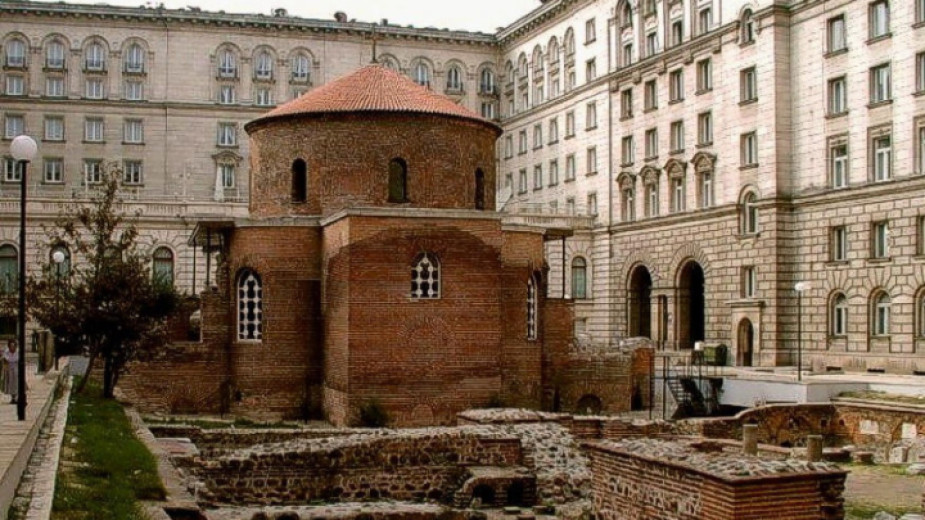 4
4
Sofia offers unlimited opportunities for historical walks. The Saint George Rotunda is among the most-visited sites in Bulgaria’s capital. This is the oldest ancient building in the capital city which was relatively well preserved. It was built in the beginning of the 4th century AD during the rule of Emperor Constantine the Great and the upsurge of Ancient Serdica (the old name of Sofia)

Saint George Rotunda is located at the heart of the capital city in the inner yard of the Presidency building only several meters away from the remains of the ancient fortress Serdica. The oval room- the Rotunda has a height of 14 meters and diameter of 9.5 meters. Its altar room has a square shape and the main entrance of the rotunda is located on the western wall.
When the Roman Empire allowed Christianity, the rotunda started serving as baptistery. During the reign of Emperor Justinian the Great, Saint George Rotunda became a church. Its oldest frescoes date balk to that period. The temple survived the Ottoman Rule as well.
You can learn details about the history of one of the most emblematic monuments of culture in Sofia in the publication of Radio Bulgaria’s collection: The Rotunda of Saint George- ancient history and mysteries.
Photos: pravoslavieto.com
Ukrainian sculptor Mykhailo Parashchuk was born on November 16, 1878. He crafted the ornaments of some of the most emblematic buildings in the Bulgarian capital. Mykhailo Parashchuk was born in the village of Varvaryntsi, at the time within..
On October 19, the Bulgarian Orthodox Church honors the memory of the humble hermit from the Rila mountain and heavenly patron of the Bulgarian people and Bulgarian doctors. Called "an earthly angel" and "a heavenly inhabitant" during his lifetime,..
On the sixth day after the beginning of the summer fasting dedicated to the Theotokos, the Bulgarian Orthodox Church celebrates the Transfiguration of the Lord, one of the twelve feasts of the Lord . And as the Bulgarian tradition dictates, the church..

+359 2 9336 661
